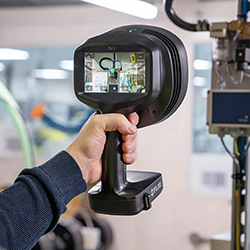6 Implications of the Chip Shortage for Auto Manufacturing
When Is the Best Time to Introduce CNC Automation?
Examining the Gender Gap in Manufacturing: 5 Potential Solutions for 2022
Embrace the edge to avoid unscheduled downtime
Three Ways to Improve Collaboration Among Manufacturing Sites
Service buses and their impact on digitalization
Sustainable manufacturing at the edge
Molex Announces Results of Global Design Engineering Innovations Survey
RAPID + TCT 2022 Promises "Next Level" Innovation in Additive Manufacturing
5 Amazing Ways Automation Benefits Fabrication
ABB Robotics showcases future of retail using recovered marine plastic at London's Selfridges
Designing a More Responsive Supply Chain: 7 Strategies for Manufacturers
3D Electronics Enables Greater Integration, Says IDTechEx
The affordable way to upgrade to a smart factory - Retrofitting legacy equipment
Want to Get Your Brand on Retailers' Shelves? Aim for a Consumer-Centric Approach
Records 301 to 315 of 863
First | Previous | Next | Last
Engineering - Featured Product

